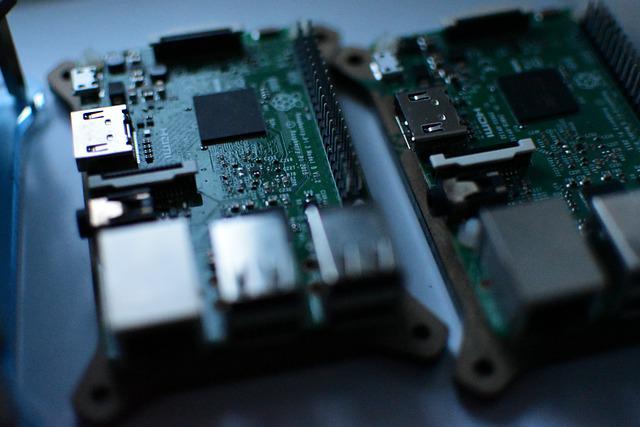What Could Go Wrong With IoT Development?
Every technology and development service used for asset tracking, positioning, or connectivity has its own set of common errors to avoid. Let's take a look.
Join the DZone community and get the full member experience.
Join For FreeAsset tracking, positioning systems, and connectivity technologies are great Internet of Things tools when used right. But as these systems evolve and the business grows, things can get increasingly difficult and before long, issues can occur. This requires research, expert support, and a sound plan to get out of the maze.
In this piece, we’ll put a spotlight on some of the most common asset tracking, positioning, and connectivity IoT mishaps businesses come across that need to be addressed. Connect device issues, network or service issues, business issues, user issues, and real-world issues — there are plenty of things that can go wrong with IoT. Read on!
Most Common IoT Software Development-Specific Errors
Every technology and development service used for the sake of asset tracking, positioning, or connectivity has its own specific set of most common errors to avoid. Here’s a short breakdown of the most popular issues.
RFID
A common mistake with RFID (radio-frequency identification) is not choosing the correct RFID frequency, meaning the size of radio waves transmitted between components. Also, forgetting to replace any improper maintenance of tags and transponders is often an issue. Even more common, a wrong reader or antenna is being chosen that is not aligned with the desired range. But the most important when it comes to doing RFID right is to avoid overusing the technology. It just won’t work well at scale. When a reader has to cope with hundreds of tags at the same time, it’s highly possible that some of the items will be lost in the crowd. Being aware of this fact can save a lot of headaches, especially if you’re unrealistically building some sort of tech/business logic on top of these assumptions. All in all, these mistakes translate into inefficiencies and extra costs.

Bluetooth
The most common error that you can come across when using Bluetooth technology is that the devices are not pairing. Usually, the reason is that they are either not in pairing mode or out of range. Often, the Bluetooth needs to be restarted and it suffers a loss of quality, which can cause frustration and inconvenience, especially when it comes to wearables. It’s important to bear in mind that Bluetooth devices struggle when something interferes with the signal. The connection is easily lost and there’s a lot of disruption in the service. Also, often RSSI checks give incorrect results. This check of the power of the signal is crucial mostly when Bluetooth is used to estimate distance.
Wi-Fi
When it comes to frustration, dropped Wi-Fi connection is often the cause of the nerves of its users. Usually, the signal is not strong enough, the router is located in the wrong place, the distance is too far, or there’s interference caused by other equipment, furniture, or walls. But there’s also a list of not-that obvious reasons for failure. For example, sometimes your device doesn’t support the frequency of the network, or there are some service issues causing interference. Often, different Wi-Fi routers and devices cut into each other’s reach. Thus, they lose capacity, the signal weakens, and you have to search for different channels. In this case, turning the router off and back on won’t do the job.
GPS
GPS is a system that’s vulnerable to both human error and atmospherics. When installed wrong, it leads to data inaccuracy. Moreover, in some locations, GPS is not available, and when chosen as a technology used for positioning at a business level, it just won’t deliver. Also, GPS can deliberately be jammed or hacked to undermine its functioning. But most importantly, GPS can be a very inaccurate technology. Even aspects such as cloud coverage or local storms significantly affect its performance. Eliminating — or rather being aware of — these issues is crucial to ensure the correct operation of the positioning technology.
General Mistakes of Implementing IoT Solutions
Other than technology-specific mishaps to avoid, there’s a list of other, more general aspects to take into consideration. These usually too are a source of a headache:
Human Error
Every technology is heavily dependent on humans and is not foolproof. Its parts can be hard in physical maintenance, stolen, or used in the wrong way, especially when there are a lot of assets being tracked. As a consequence of the fact that these solutions are prone to human error, companies suffer production loss, material wastage, or labor over time due to downtime. Not to mention there’s a high risk of rescheduling large IoT projects.

Neglecting the Importance of Security
Cybersecurity plays a crucial role in a successful IoT implementation. With an ever-growing number of interconnected devices, highly sensitive data and apps that require access restrictions are increasingly vulnerable. Businesses often neglect the importance of security and do not overcome issues as soon as they arise. Insecure web interface, bad authorization, privacy issues, lack of physical security, lack of custom software updates on time, issues with configurations — there are plenty of things that can go wrong when it comes to IoT safety!
Too Much Focus Just on Costs
Cost savings are the most popular driver for the implementation of IoT technologies in business worldwide. But looking only at money is a common mistake, as there are plenty of more important aspects to take into consideration, such as the number of devices to connect, the type of technology to implement, the features of the software to be loaded, and a relevant architecture of hardware infrastructure. It is crucial not to forget what’s the right order — it’s the technology that must adapt to pain points, not the other way around. Unfortunately, organizations are often choosing a cheaper technology to achieve a business goal, whereas it’s important to start with the need and then choose adequate solutions.

Wrongly Estimated Scale
Determining the right amount of assets to be tracked or devices and sensors to be located or interconnected can be a tricky task. Especially in some industries, it’s really hard to deal with overstock predictions. When the proper scale grasp is missing, networks get overloaded and fail. As a consequence, the business incurs unnecessary costs or can’t use the technology according to its specification.
Wrong Technology Chosen
When the spectrum of technical options available on the market is so broad, it’s easy to choose a solution that’s just not the best fit. Going for a technology that is wrong can be limiting and costly. Especially since there are plenty of good options available. Thoroughly think about what you want to achieve and what exact pain points you’re trying to address. Based on that, it’s easier to avoid going too little or too much. Remember that IoT can transform businesses when implemented properly.

Eating the Elephant in One Bite
Plenty of issues mentioned above could be avoided if you don’t go too far, too fast. Take it easy, implement new tech step by step and start with a proof of concept — especially if you’re an early adopter. A phased approach is always beneficial when it comes to technology. Don’t forget to test at every stage of the project. Be flexible and implement changes incrementally in order to avoid overall failure of the connectivity solution. It’s reasonable to learn how to walk before aiming for a marathon!
Not Understanding the Proper Use of Given Technology
Especially among new adopters, often there’s confusion about the capabilities of chosen positioning, asset tracking, or connectivity IoT technology. Some just think that simply putting a label on an item or turning the Bluetooth connection on will magically take their business to the next level and create a competitive advantage, but that’s not exactly true. In order to be successful, every technology — both software and hardware — must be matched, integrated, and set up accordingly.
How to Overcome the Most Common Issues of IoT Software Development
There are a lot of mistakes to predict for IoT software development companies. As you can see, there are plenty of reasons that could potentially disrupt the daily operations of the business. All electrical devices can lose power, regardless of whether the device is connected or not. Electronics fail, interference occurs, and software can be buggy and can crash. And it’s just the tip of the iceberg! But when used correctly, connectivity, positioning, and asset tracking IoT technologies such as RFID, GPS, Bluetooth, Wi-Fi, and others can be a significant boost in productivity and can take the business to the next level. Just like any other tech solution, it’s easy to fall into common traps and before you learn a lesson, consequences have to be borne.

Often companies don’t know exactly why they are going for a certain tech solution and how it can improve their business (or not), and they focus purely on what the costs vs. expected return from the investment are. Implementing the technology right the first time means avoiding some critical, common issues and not overseeing crucial aspects such as user research and contextual testing. Some of these issues are easy to address, some of them not.
Published at DZone with permission of Alexey Shabalovskiy. See the original article here.
Opinions expressed by DZone contributors are their own.

Comments